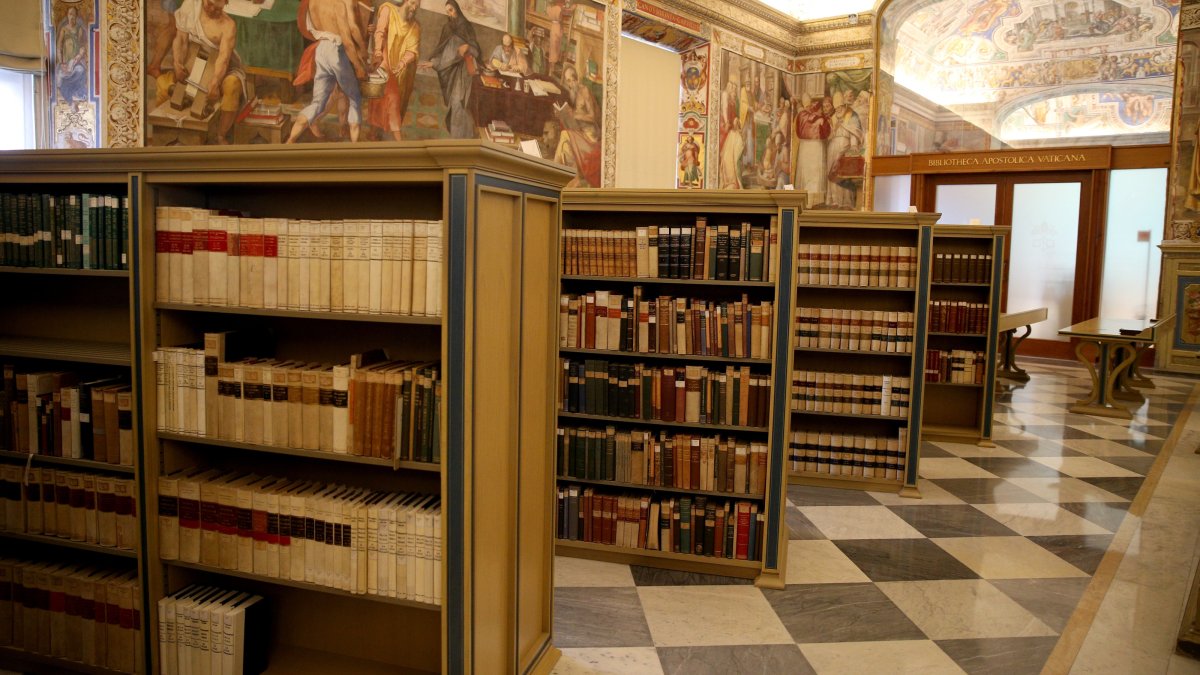Home to more than 80,000 manuscripts, 300,000 coins and medals, and nearly 2 million printed books, the Vatican Apostolic Library stands as one of the world’s oldest and most significant research institutions, offering scholars access to a vast trove of human knowledge dating back more than 500 years.
Located within the world’s smallest independent state, the Vatican, the library opened its doors to members of the Foreign Press Association in Rome, including an Anadolu Agency (AA) correspondent.
The origins of the library trace back to the A.D. fourth century, when Catholic popes began collecting documents and texts. However, by the 13th century, those early collections had largely dispersed. Efforts to reorganize the archives were disrupted by the papacy’s temporary relocation outside Rome, leading to the loss of many works.
The modern library was officially founded in 1475 by Pope Sixtus IV and has since grown into a center of scholarship, housing rare works in religion, history, philosophy, law, science, theology and literature – in multiple languages.
Its collection spans approximately 50 kilometers (31 miles) of shelving, including 8,300 incunabula (books printed before 1501), 150,000 prints and engravings, 150,000 photographs and numerous visual artifacts. Among the many treasures are also documents related to Türkiye and the Ottoman Empire, reflecting centuries of political and cultural exchange.
One notable item is the “Map of the Nile” by 17th-century Ottoman traveler Evliya Çelebi, also known as Derviş Mehmed Zılli. Preserved by the library for over 200 years, the map was recently restored and displayed at the Islamic Arts Biennale in Jeddah, Saudi Arabia.
In an interview with AA in the library’s Sistine Hall, decorated with historic frescoes, library director Rev. Mauro Mantovani emphasized the institution’s mission.
“The Vatican Apostolic Library safeguards, collects and offers access to a great and meaningful heritage – one that has formed over the centuries,” he said.
Mantovani noted that the library is committed to digital accessibility, with around 30,000 of its 80,000 manuscripts already digitized and available to the public through its website.
When asked about Turkish-related materials, Mantovani said the exact number of documents is uncertain and would require verification. However, he confirmed that Turkish scholars and researchers have worked extensively at both the Vatican Library and its sister institution, the Vatican Apostolic Archives.
“Our aim is to provide scholars with the documents relevant to their research. We know there is a wide range of material related to ancient languages and the Turkish language as well,” he said. “Everything related to Turkish literature can be highly valuable – both in the form of preserved documents and as sources for new research.”
According to Mantovani, the Vatican Library’s mission, as defined in the Vatican Constitution, is to preserve its cultural heritage and make it available to all who seek truth – regardless of background or faith.
“This has an inclusive dimension,” he added. “Through research and study, not only individuals but also different cultural and religious traditions can come together. Even scholars from countries in conflict may build bridges during their work here.”
Cultural treasures
Maintaining such an extensive and historic collection presents significant challenges, Mantovani noted.
“Water and fire are obvious threats to libraries, but so are dust, mold and insects – all of which make preservation difficult,” he said. “Human factors can also be threats, including theft, damage or neglect.”
Despite these challenges, the Vatican Apostolic Library remains a beacon for global scholarship and a guardian of centuries-old treasures.

